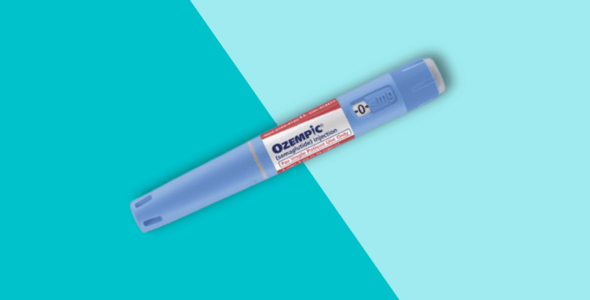The science behind Ozempic was wrong: What’s really happening in your body
What if the secret to Ozempic's success wasn't in your stomach, but in your brain? New science reveals we've been looking in the wrong place all along.
Key highlights
- The science wasn’t wrong; it was evolving. New research reveals that Ozempic and similar drugs act primarily on the brain’s appetite and reward centers, not just the gut.
- GLP-1 medications influence three key sites of action: the brain (appetite control), gut (digestion and side effects), and pancreas (blood sugar regulation).
- The brain is the main driver of weight loss. These drugs quiet “food noise,” curb cravings, and change how the brain processes hunger and reward.
- The gut effect explains early side effects, such as nausea and fullness, but is not the main cause of weight loss.
- Weight gain after stopping is expected, since obesity medications replace a disrupted appetite-regulation system, highlighting obesity as a chronic condition.
- GLP-1 receptor agonists may also influence mood and addiction circuits, though early research is still ongoing.
Ozempic (active ingredient: semaglutide) is an FDA-approved glucagon-like peptide-1 (GLP-1) receptor agonist made by Novo Nordisk. It is used to lower blood sugar in people with type 2 diabetes and is also used off-label for weight loss in people with obesity and overweight.
When The Atlantic ran its viral headline claiming “the science was wrong” about Ozempic, it sparked widespread confusion and debate across news and social media. New research doesn’t overturn what we know. It clarifies that GLP-1 drugs act more in the brain than the gut, deepening our understanding of how they truly work.
The GLP-1 breakthrough led to the creation of two major injectable drugs: semaglutide (Ozempic and Wegovy) and tirzepatide (Mounjaro and Zepbound). These medicines have quickly become game-changers to treat type 2 diabetes, but are now widely used for weight management.
New research shows that these groundbreaking drugs work in a deeper, more powerful way than once thought, by targeting the brain, the command center that controls hunger and cravings. This shift doesn’t just clarify the science. It transforms our understanding of obesity and the biology of weight loss.
Early studies focused on how these weight-loss drugs worked in the gut to help manage type 2 diabetes, but newer research shows the brain plays the leading role. It’s the brain’s appetite and reward centers, not just gut signaling, that drive the powerful weight-loss effects of GLP-1 medications.
The science behind Ozempic was wrong. Discover how it really targets your brain to quiet ‘food noise’ and curb cravings, not just your stomach.
The core mechanism: Three sites of action
Semaglutide (Ozempic/Wegovy) and Tirzepatide (Zepbound/Mounjaro) are multi-systemic agents that act on three key sites in the body:
Site 1: The brain (primary weight loss driver)
These drugs activate GLP-1 receptors in the hypothalamus, the brain’s appetite control center, which regulates hunger, satiety, and reward-driven eating. By mimicking natural GLP-1 signaling, they promote satiety, reduce cravings, and enhance satisfaction after smaller meals.
This recalibration of the brain’s appetite circuits leads to a sustained reduction in calorie intake. People feel full sooner, think about food less, and naturally make lower-calorie choices, all of which drive the consistent, clinically significant weight loss seen with these medications.
Site 2: The gut (the side effect mechanism)
These weight loss medications slow gastric emptying, meaning food remains in the stomach much longer before moving into the intestines. This prolongs digestion and leads to a steadier release of nutrients, which helps moderate post-meal blood sugar spikes.
The delayed emptying is also responsible for the early side effects many patients experience — nausea, bloating, a sense of fullness after small meals, and sometimes vomiting. While this gut effect contributes modestly to appetite control and improved glucose regulation, it’s not the main driver of weight loss. Over time, the body typically adapts, and these gastrointestinal symptoms lessen as the brain’s appetite-regulating effects take precedence.
Site 3: Pancreas and metabolism
These medications enhance the pancreas’s ability to respond appropriately to food intake. When blood sugar levels rise after eating, it stimulates insulin secretion to help move glucose into cells for energy, while simultaneously suppressing glucagon, a hormone that signals the liver to release stored glucose. Importantly, this response only occurs when blood sugar is elevated, reducing the risk of hypoglycemia (low blood sugar).
This finely tuned, glucose-dependent mechanism leads to smoother blood sugar control throughout the day. Over time, it supports healthier insulin sensitivity, reduces inflammation, and can improve markers of metabolic health conditions such as HbA1c and fasting glucose. These metabolic benefits complement the brain and gut effects, creating a more comprehensive improvement in weight and metabolic function.
The old story: Why slowing digestion was only a small piece of the puzzle
For years, scientists believed that GLP-1 drugs like semaglutide (Ozempic, Wegovy) and liraglutide (Saxenda) helped reduce appetite primarily by slowing how quickly the stomach empties food into the intestines.
GLP-1 receptors in the gut do indeed slow gastric emptying. This effect plays a legitimate role in creating a feeling of fullness and satiety, and it’s also part of why people on these drugs often experience nausea or bloating.
This understanding led to a straightforward and seemingly logical explanation: GLP-1 drugs reduce appetite by making food “sit” in the stomach longer, sending fullness signals to the brain.
This gut-brain communication model was supported by early animal studies and a growing understanding of how gut hormones affect metabolism and hunger. It was measurable. And it fit appropriately with what was already known about digestive physiology.
Over time, researchers realized this wasn’t the full story. In fact, focusing on slowed digestion alone was like blaming a citywide power outage on a single burnt-out lightbulb, while ignoring the downed power line at the station. Yes, that lightbulb’s out, but it’s a symptom, not the cause.
Slowed gastric emptying is real, and it does contribute to early satiety. It even explains some of the common side effects.
The real power of GLP-1 drugs appears to lie elsewhere, directly within the brain itself, where these medications act on reward and appetite centers far beyond the gut.
The new model: The brain is the main stage
The updated understanding centers on a concept called the gut-brain axis, the communication superhighway that links your digestive system to your brain.
At the heart of that system is GLP-1, a hormone known as an incretin. Its job isn’t just to slow digestion, it’s to deliver messages from the gut to the brain about things like fullness, blood sugar, and energy balance.
Recent research has revealed that GLP-1 drugs don’t just send messages to the brain. They act directly inside it.
Scientists discovered that these drugs light up areas of the brain tied to reward and motivation, not just fullness. Key regions include the hypothalamus (which regulates hunger), the hindbrain (which controls basic satiety signals), and the mesolimbic pathway, a set of brain circuits that governs how much we want something, like highly palatable food.
In simple terms, these reward circuits are why you might crave a cookie even when you’re full. GLP-1 drugs seem to turn down the volume on those cravings. They’re not just making you feel full, they’re making food less mentally compelling.
Quieting the “food noise”
One of the most prominent effects people report with GLP-1 drugs like semaglutide (Ozempic, Wegovy) or tirzepatide (Mounjaro, Zepbound) is that the constant mental chatter around food, the cravings, the distractions, starts to quiet down. Scientists now understand that this isn’t just about a full stomach. It’s about what these drugs are doing inside the brain.
Both semaglutide and tirzepatide are designed to cross the blood-brain barrier, the brain’s protective shield that filters what can enter. Once past this barrier, they’re able to bind to GLP-1 receptors located in the brain itself, particularly in key areas that regulate hunger and reward.
One of their primary targets is the hypothalamus, often described as the brain’s “appetite thermostat.” This tiny but powerful structure helps regulate energy balance, telling you when you’re hungry, when you’re full, and even how rewarding food feels.
GLP-1 drugs reduce hunger signals in the hypothalamus while boosting satiety signals, making it easier for the brain to recognize when the body has had enough. In practical terms, this means:
- You feel full sooner during meals.
- You’re less likely to snack out of boredom or emotional habit.
- Food still tastes good, but it doesn’t dominate your thoughts.
This central effect helps explain why people often say they feel a “mental distance” from food they once couldn’t resist. The drugs are doing more than altering digestion. They’re helping turn down the brain’s food-related noise, creating a quieter, more balanced internal environment where appetite feels manageable.
Rewiring reward
Beyond hunger and fullness, GLP-1 drugs like semaglutide and tirzepatide have a powerful effect on the brain’s reward system, specifically in regions like the ventral striatum, a hub for motivation, pleasure, and habit formation. This area plays a key role in how we anticipate and seek out rewards, including highly palatable foods that are high in sugar, fat, or salt.
One of the major players in this system is dopamine, a neurotransmitter that drives craving and reinforces behaviors that feel good. When you see a slice of pizza or smell cookies baking, dopamine surges in these circuits can push you toward eating, not necessarily because you’re hungry, but because your brain has learned that food equals pleasure.
This is where GLP-1 drugs do something remarkable: they reduce the dopamine response to food cues, especially those tied to hyperpalatable, “junk” foods. In effect, they dampen the brain’s overactive reward signals, making previously irresistible foods seem less urgent, less exciting, and easier to ignore.
This helps explain the phenomenon people describe as “quieting the food noise.” That noise is the constant, low-level craving generated by these reward circuits, a kind of mental background hum that can drive mindless snacking, late-night eating, or intense food preoccupation.
By lowering the emotional and neurological “reward value” of food, GLP-1 medications help break the cycle of compulsive eating, not through willpower, but by gently rewiring how the brain responds to food at its most fundamental levels.
Ozempic for weight management
When considering Ozempic for weight management, its use is considered off-label. Doctors often consider similar criteria to Wegovy (semaglutide for weight loss) when prescribing Ozempic for weight loss:
- BMI of 30 or higher (obesity): Patients with a body mass index of 30 or above are classified as obese. Obese individuals are generally considered the primary candidates for weight management treatment, as body weight reduction can significantly improve overall health and reduce the risk of chronic diseases.
- BMI of 27 or higher (overweight) with at least one weight-related comorbidity: Patients who are overweight but have a BMI of 27 or higher may also qualify if they have at least one health condition linked to excess weight. These comorbidities amplify the health risks associated with being overweight, making weight management treatment medically justifiable.
Common comorbidities include:
- High blood pressure (Hypertension)
- High cholesterol (Dyslipidemia)
- Obstructive sleep apnea
- Heart disease
- Insulin resistance/Pre-diabetes
- Polycystic ovary syndrome (PCOS)
Wegovy contains the same active ingredient as Ozempic, semaglutide, but it is approved by the U.S. Food and Drug Administration (FDA) for chronic weight management in adults. This means it has undergone clinical trials demonstrating its effectiveness and safety for helping patients lose weight and maintain that loss over time.
What this new understanding explains
The shift from a gut-centered to a brain-centered model of GLP-1 drug action helps make sense of several key observations that didn’t fit the old explanation. Here’s what the new science helps clarify:
The potency of the effect
A 15–20% (or greater) weight loss can’t be explained by slower stomach emptying alone. It reflects deeper, brain-driven changes that powerfully and sustainably reduce appetite.
- Appetite regulation becomes more consistent, not just meal-to-meal but day-to-day.
- Dramatic decreases in overall calorie consumption are often reported even without strict dieting.
- Long-term changes in eating patterns persist, suggesting a rewiring of food motivation and habits.
Tirzepatide, which targets multiple hormone pathways, causes even greater weight loss, further supporting a central (not just gut) mechanism.
The reduction in cravings (not just hunger)
The older model explained why people felt full sooner, but it couldn’t explain the near-total disappearance of food preoccupation or the fading desire for things like sweets, fast food, or even alcohol.
- People often report that high-reward foods lose their appeal, even ones they previously couldn’t resist.
- “Food noise” and “drink noise”, the background urge to eat or drink, are quite dramatic.
- These changes appear independent of actual hunger, pointing to changes in brain reward circuits, not just digestion.
- Some patients even describe a sense of emotional neutrality toward food, not just fullness.
The nature of side effects
Nausea and GI symptoms can result from slowed digestion, but the new model explains why these effects are so common and persistent for some.
- The area postrema, the brain’s “nausea center,” has a high concentration of GLP-1 receptors.
- Activation here can trigger nausea, vomiting, and food aversion, even when the gut isn’t overly full.
- This explains why some people feel nauseated after very small meals, or even in the absence of eating.
- It also helps clarify why nausea tends to improve over time as the brain adapts to the drug’s presence.
The new brain-based model doesn’t just add to the old theory. It reframes it entirely, helping explain the powerful, multi-layered effects of GLP-1 drugs in a way that finally fits the clinical reality.
Tips for muscle preservation
Here are some tips you can use to help with muscle preservation:
- Prioritize protein intake: This is the single most important strategy for maintaining lean muscle during GLP-1 therapy. Aim for 60–90 grams of high-quality protein daily, distributed across meals. If nausea or reduced appetite make solid food challenging, protein shakes or supplements can help meet the daily target. Adequate protein supports recovery, metabolism, and overall energy levels.
- Resistance training: Exercise should be viewed as essential therapy, not optional. Resistance and weight-bearing training 3–4 times per week sends strong signals to the body to preserve muscle tissue, even during caloric deficit. Activities such as strength circuits, pilates, or bodyweight workouts can be customized to tolerance and fitness level.
- Don’t neglect micronutrients: Nutrients such as vitamin D, magnesium, and B vitamins support muscle metabolism, nerve function, and recovery. A well-rounded diet or targeted supplementation (as advised by a clinician) can help prevent deficiencies that worsen muscle loss or fatigue.
- Stay hydrated and manage electrolytes: Adequate hydration supports muscle performance and reduces fatigue, especially since GLP-1 medications can suppress thirst and appetite. Include electrolyte-rich fluids if nausea, vomiting, or reduced intake leads to dehydration.
Researchers are already exploring next-generation treatments that pair GLP-1 drugs with other agents, such as monoclonal antibodies, specifically designed to prevent or reverse lean muscle loss. These combination therapies aim to optimize fat loss while protecting strength, metabolism, and physical function.
Battling the weight loss plateau
One of the most common and frustrating experiences for people on GLP-1 drugs like Ozempic or Mounjaro is hitting a weight loss plateau.
This phenomenon, often called the “Ozempic plateau”, is completely normal. It happens when your body reaches a new equilibrium between calories in and calories out.
Here’s what’s going on:
- GLP-1 drugs lower appetite, leading to a reduced calorie intake.
- As weight drops, your basal metabolic rate (BMR) slows down, and you burn fewer calories at rest.
- Eventually, your energy intake = energy burn, and weight loss stalls.
- This is your body’s natural adaptive response to prevent further weight loss. It’s built into our biology for survival.
To get past a plateau, you have to change the energy balance again, either by burning more or consuming less. Here’s how:
Increase physical activity
- Add structured resistance training to preserve muscle and boost metabolism.
- Incorporate more daily movement (walking, standing, non-exercise activity).
- Consider short bouts of high-intensity exercise, which can elevate calorie burn and improve metabolic flexibility.
Adjust nutrition
- Work with a dietitian to fine-tune macronutrients (increase protein to support lean mass).
- Reassess portion sizes. Your body needs fewer calories at a lower weight.
- Watch for creeping intake or snacking that may be unconscious or emotionally driven.
Reinforce behavior
- Plateaus are often where motivation dips. Reinforce habits, structure meals, and stay consistent.
- Avoid unnecessary dose increases unless discussed with your provider. Plateaus are physiological, not always a sign that the drug isn’t working.
A plateau isn’t failure. It’s a sign that your body is adapting. With smart adjustments in activity and nutrition, continued progress is possible.
Practical implications for patients and prescribers
This new drug mechanism highlights not just how these drugs work, but also who might benefit, who might be at risk, and how to use them responsibly.
The brain-level action of GLP-1 drugs helps explain not only nausea but also changes in cravings and emotional attachment to food, diminished interest in certain foods, alcohol, or other rewarding behaviors. In some cases, mood shifts or flatness are related to reduced dopamine signaling. These effects are not always side effects. Sometimes, the effects are signs the drug is working, but they require contextual understanding and monitoring.
GLP-1s may be helpful for binge eating or emotional overeating, as they reduce urge-driven behavior and food preoccupation. However, there are growing concerns about using these drugs in people with:
- Restrictive eating disorders (anorexia)
- Body image disorders or a history of disordered eating patterns
Also, reports in the media highlight ethical concerns from clinicians:
- Fear of overprescription in vulnerable groups
- Need for more screening and psychiatric oversight
Frequently asked questions
Does the new science mean Ozempic doesn’t work?
No, Ozempic still works, as proven in multiple clinical trials. The new science only refines our understanding of how it works, not whether it works. Its benefits for blood sugar control and weight loss remain well-established.
Will this change how doctors prescribe Ozempic?
Not immediately. Doctors will continue to prescribe Ozempic as before, based on current evidence and guidelines. However, emerging research may eventually influence how they monitor patients’ mood, cravings, and behavior, helping tailor treatment more precisely.
Could GLP-1s affect addiction or mood?
Early studies suggest this class of drugs may influence brain reward pathways linked to addiction and mood, but the evidence is still preliminary. These effects are not yet fully understood, so self-medicating for such issues isn’t advised. Always consult a qualified specialist instead.
If the science was “wrong,” does that mean the drugs are unsafe?
No, the misunderstanding was about the mechanism, not the safety evidence. Ozempic and similar drugs were thoroughly tested in large clinical trials that confirmed their safety and efficacy for approved uses. The updated science helps refine our understanding and management of their effects.
Does this mean the weight will come right back if I stop?
Yes, this new understanding helps explain why weight often returns after stopping Ozempic. The medication temporarily replaces a natural signaling system that regulates appetite, so when it’s stopped, hunger cues and “food noise” can resurface. It reinforces that obesity is a chronic condition needing ongoing management.
Is this just a “willpower in a shot”?
No, Ozempic isn’t “willpower in a shot.” It works by correcting a disrupted biological signaling system that regulates appetite and food motivation. This shifts the view of weight struggles from a lack of discipline to a legitimate medical condition.
Should I stop taking Ozempic because of this?
No, don’t stop taking Ozempic without consulting your doctor. The new research doesn’t change its proven benefits or safety when used as prescribed. Always discuss any concerns or side effects with your healthcare provider before making changes to your treatment.
Conclusion: What we now know about Ozempic
The early understanding of GLP-1 drugs like Ozempic was centered on a simple idea: slowing digestion equals feeling full equals eating less. That model made sense at the time, rooted in gut physiology, but it missed the bigger picture.
New research shows the brain is the primary site of action, especially areas tied to hunger, reward, and cravings.
GLP-1 drugs rewire the brain’s response to food, not just how full the stomach feels.
Weight regulation is not just willpower. It’s a complex hormonal and neurological process. GLP-1 drugs are the most powerful tools we have, but they come with risks (e.g. muscle loss, lifelong commitment).
This new understanding is part of a larger, long-overdue shift: moving away from seeing obesity as a lifestyle failure and toward recognizing it as a chronic disease, shaped by biology, genetics, environment, and brain chemistry.
Ozempic can be life-changing, but only when used as part of a well-rounded care plan.
Success requires a proactive partnership with a knowledgeable healthcare provider who can monitor and preserve muscle mass, adjust doses and manage side effects, screen for long-term complications, and help plan for sustainable, lifelong care.






